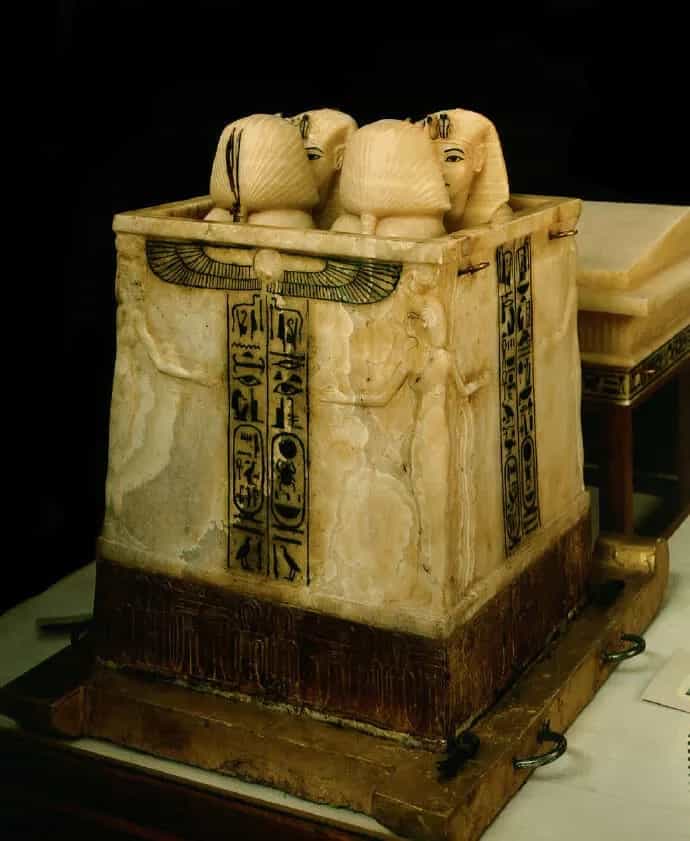Discovered within the Treasure Room of Tutankhamun‘s tomb, the Canopic Shrine stands as a testament to ancient Egyptian craftsmanship and religious devotion.
Resting upon a sledge, the shrine is adorned with four corner pillars supporting a roof embellished with a frieze featuring uraeus serpents and the radiant sun disk. A second frieze graces the shrine’s roof, enhancing its regal appearance.
The inscriptions on the pillars proudly proclaim the pharaoh’s name and titles, ensuring his eternal legacy. Four goddesses, depicted with open arms and identified by hieroglyphs, vigilantly guard the sacred organs of the king. Each goddess is paired with one of the four sons of Horus, entrusted with preserving Tutankhamun’s liver, lungs, stomach, and intestines.
Reflecting the artistic style of the Amarna period, the shrine exhibits subtle nuances such as the slight rotation of statues’ heads, departing from traditional frontal portrayals. The elongated necks and naturalistic body forms further highlight the mastery of ancient Egyptian sculptors.
Crafted from wood adorned with stucco and gilded glass paste, the Canopic Shrine remains a marvel of ancient artistry significance. Today, housed in the Egyptian Museum in Cairo.
Alabaster shrine for Canopic Vases
Crafted from alabaster, a prized stone sourced from the quarries of Hatnub in Middle Egypt, the shrine dedicated to Canopic Vases was a central discovery within the Treasure Room’s opulent setting. Nestled within a larger shrine of gilded wood, its design harkens back to the architectural motifs of Predynastic temples found in southern Egypt.
Mounted on a gilded wooden sled for mobility, the alabaster shrine’s interior is compartmentalized into four sections, each once housing a solid gold sarcophagus containing Tutankhamun’s preserved organs.
Alabaster lids adorned with the king’s visage, framed by the nemes headdress and embellished with vulture and uraeus serpent motifs, seal these compartments, symbolizing royal authority and protection.
The shrine’s base, enriched with delicate gold leaf, features a pattern of alternating djed and tiet symbols, representing Osiris and Isis respectively, significant deities in Egyptian mythology associated with resurrection and rebirth.
Canopic jars, essential vessels in ancient Egyptian funerary practices, were employed to safeguard the pharaoh’s liver, intestines, lungs, and stomach. Notably absent was a jar for the heart, believed to house the soul and thus left within the body for the journey to the afterlife.











